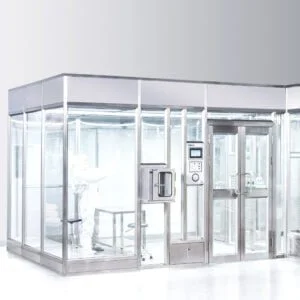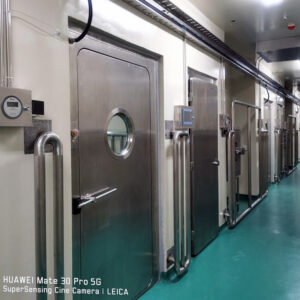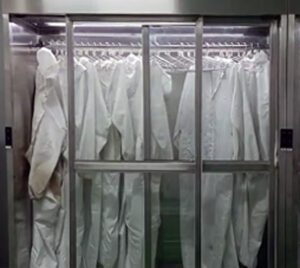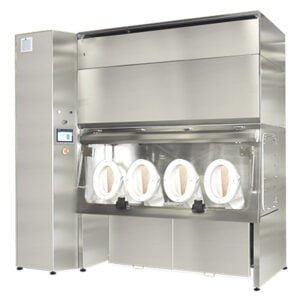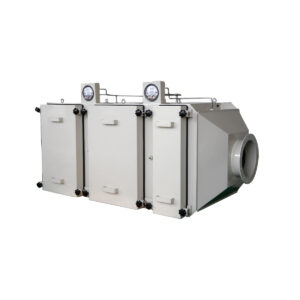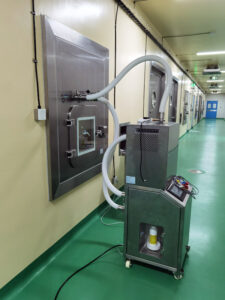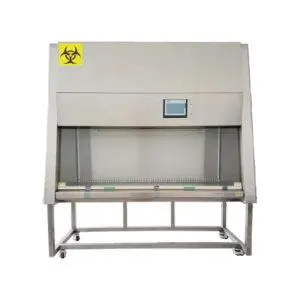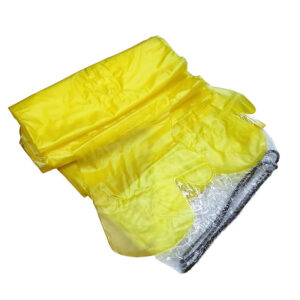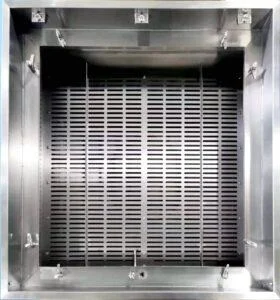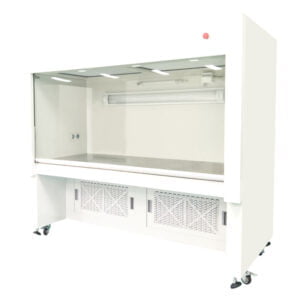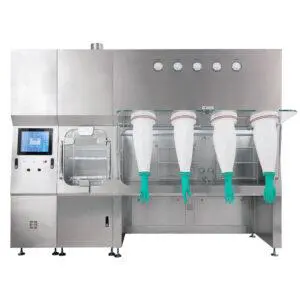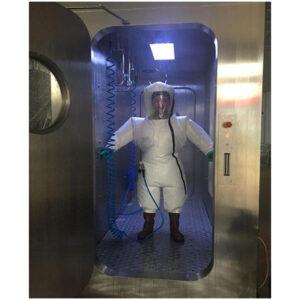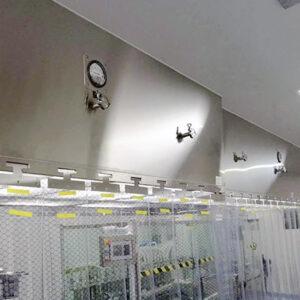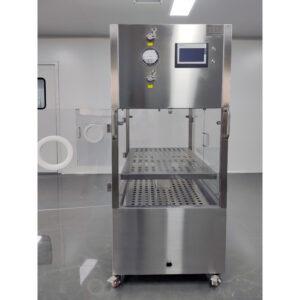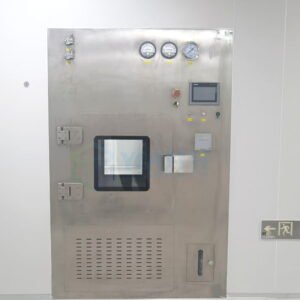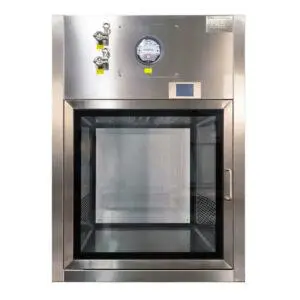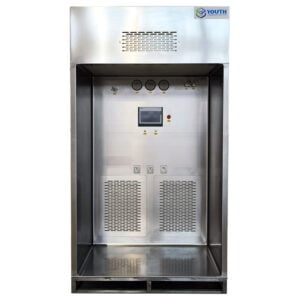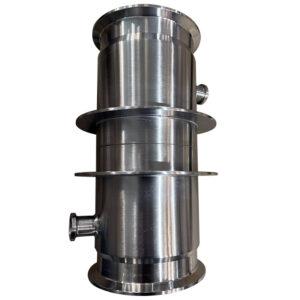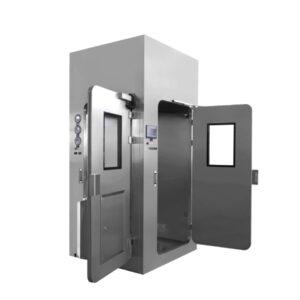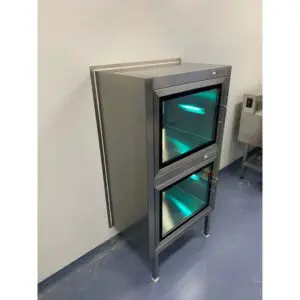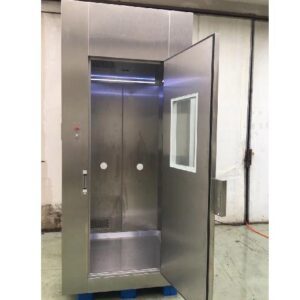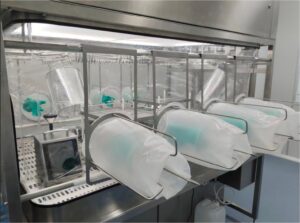In the realm of pharmaceutical manufacturing, maintaining the highest standards of cleanliness and contamination control is paramount. LAF (Laminar Airflow) Garment Cabinets play a crucial role in this process, ensuring that clean room garments remain sterile and free from potential contaminants. As the industry continues to evolve, so too do the regulations that govern it, with GMP (Good Manufacturing Practice) compliance at the forefront of these standards.
This comprehensive guide explores the intricate relationship between LAF Garment Cabinets and GMP compliance, shedding light on the importance of these specialized storage units in maintaining the integrity of clean room environments. We'll delve into the specific requirements set forth by GMP regulations, the design considerations for LAF Garment Cabinets, and the best practices for their implementation and maintenance.
As we navigate through this topic, we'll uncover the critical role that LAF Garment Cabinets play in pharmaceutical manufacturing, biotechnology, and other industries where maintaining a sterile environment is essential. From the basic principles of laminar airflow to the advanced features of modern garment storage solutions, this article aims to provide a thorough understanding of how these cabinets contribute to GMP compliance and overall product quality.
"LAF Garment Cabinets are not just storage units; they are integral components of a comprehensive contamination control strategy, essential for meeting and exceeding GMP standards in clean room environments."
What are LAF Garment Cabinets and Why are They Important for GMP Compliance?
LAF Garment Cabinets, also known as clean room garment storage cabinets, are specialized units designed to store and protect clean room apparel from contamination. These cabinets utilize laminar airflow technology to maintain a constant stream of filtered air over the stored garments, effectively preventing particulate matter from settling on the surfaces.
The importance of these cabinets in GMP compliance cannot be overstated. They serve as a crucial link in the chain of contamination control, ensuring that personnel entering clean room environments are donning garments that are as sterile as possible. This level of control is essential for meeting the stringent requirements set forth by GMP regulations.
In the context of pharmaceutical manufacturing and other sensitive industries, LAF Garment Cabinets play a vital role in maintaining the integrity of clean room operations. By providing a controlled environment for garment storage, these cabinets help to minimize the risk of product contamination and ensure consistency in manufacturing processes.
"Proper storage of clean room garments is a critical aspect of GMP compliance, with LAF Garment Cabinets serving as the gold standard for maintaining garment sterility and cleanliness."
| Feature | Benefit |
|---|---|
| Laminar Airflow | Prevents particle settlement on garments |
| HEPA Filtration | Ensures air purity within the cabinet |
| Stainless Steel Construction | Facilitates easy cleaning and disinfection |
| Adjustable Shelving | Accommodates various garment types and sizes |
How Do LAF Garment Cabinets Contribute to Clean Room Contamination Control?
LAF Garment Cabinets are designed with a singular purpose: to maintain the cleanliness and sterility of clean room garments. By employing laminar airflow technology, these cabinets create a unidirectional stream of filtered air that flows over the stored garments, effectively sweeping away any airborne particles that could potentially contaminate the clothing.
The contribution of LAF Garment Cabinets to clean room contamination control is multifaceted. Firstly, they provide a physical barrier between the stored garments and the outside environment, minimizing exposure to contaminants. Secondly, the continuous flow of filtered air helps to maintain a positive pressure within the cabinet, further preventing the ingress of particles from the surrounding area.
Moreover, these cabinets often incorporate additional features such as UV sterilization lamps and antimicrobial surfaces, which further enhance their ability to maintain garment sterility. By ensuring that clean room personnel start with uncontaminated garments, LAF Garment Cabinets play a crucial role in upholding the overall cleanliness of the controlled environment.
"The effectiveness of LAF Garment Cabinets in contamination control lies in their ability to create a microenvironment that is even cleaner than the clean room itself, setting the stage for optimal GMP compliance."
| Contamination Control Measure | Effectiveness |
|---|---|
| Laminar Airflow | High |
| HEPA Filtration | Very High |
| UV Sterilization | Moderate to High |
| Antimicrobial Surfaces | Moderate |
What Are the Key Design Features of GMP-Compliant LAF Garment Cabinets?
GMP-compliant LAF Garment Cabinets are engineered with several key design features that set them apart from standard storage solutions. At the heart of these cabinets is the laminar airflow system, which typically incorporates high-efficiency particulate air (HEPA) filters to ensure the purity of the air flowing over the garments.
The construction material of choice for these cabinets is often stainless steel, prized for its durability, resistance to corrosion, and ease of cleaning. Smooth, crevice-free surfaces are essential to prevent the accumulation of particles and facilitate thorough cleaning and disinfection.
Adjustable shelving is another critical feature, allowing for flexible storage configurations to accommodate various types and sizes of clean room garments. Many cabinets also include transparent doors or panels, enabling visual inspection of garments without compromising the controlled environment.
Advanced models may incorporate additional features such as interlocking door systems, airflow monitoring devices, and data logging capabilities to ensure consistent performance and facilitate compliance documentation.
"The design of GMP-compliant LAF Garment Cabinets is a careful balance of functionality, cleanliness, and regulatory adherence, with each feature contributing to the overall goal of maintaining garment sterility."
| Design Feature | Purpose |
|---|---|
| Stainless Steel Construction | Durability and ease of cleaning |
| HEPA Filtration | Air purification |
| Adjustable Shelving | Flexibility in storage |
| Transparent Panels | Visual inspection without contamination risk |
How Do GMP Regulations Specifically Address Clean Room Garment Storage?
GMP regulations, while comprehensive in their scope, do not always provide explicit guidelines for every aspect of pharmaceutical manufacturing. However, they do emphasize the importance of contamination control and the proper handling of materials and equipment used in clean room environments.
In the context of clean room garment storage, GMP regulations generally require that facilities have appropriate systems in place to ensure the cleanliness and sterility of garments used in controlled environments. This includes proper storage conditions that prevent contamination and maintain the integrity of the garments between uses.
While specific storage methods may not be mandated, the principles of GMP clearly indicate that clean room garments should be stored in a manner that protects them from contamination and ensures they are fit for purpose when needed. This is where LAF Garment Cabinets come into play, offering a solution that aligns with GMP principles and provides documented evidence of compliance.
"GMP regulations may not explicitly mention LAF Garment Cabinets, but their use is strongly supported by the overarching principles of contamination control and quality assurance that form the foundation of these regulations."
| GMP Principle | Relevance to Garment Storage |
|---|---|
| Contamination Control | High |
| Documentation | Moderate to High |
| Quality Assurance | High |
| Personnel Hygiene | High |
What Are the Best Practices for Implementing LAF Garment Cabinets in a GMP Environment?
Implementing LAF Garment Cabinets in a GMP environment requires careful planning and execution to ensure maximum effectiveness and compliance. The first step is to conduct a thorough assessment of the facility's needs, taking into account factors such as the number of personnel, types of garments used, and the specific clean room classifications.
Proper placement of the cabinets is crucial, ideally locating them in areas that minimize the risk of contamination during garment retrieval and donning. This often means positioning them near gowning rooms or at the entry points to clean room areas.
Training personnel on the correct use of LAF Garment Cabinets is essential. This includes proper procedures for retrieving and replacing garments, as well as understanding the importance of maintaining the cabinet's integrity by avoiding unnecessary openings and closings.
Regular maintenance and monitoring of the cabinets are also critical best practices. This includes routine checks of airflow and filter performance, as well as scheduled cleaning and disinfection of the cabinet's interior and exterior surfaces.
"Successful implementation of LAF Garment Cabinets in a GMP environment goes beyond mere installation; it requires a holistic approach that encompasses placement, training, maintenance, and ongoing monitoring."
| Implementation Step | Importance |
|---|---|
| Needs Assessment | High |
| Strategic Placement | High |
| Personnel Training | Very High |
| Regular Maintenance | High |
How Can Companies Ensure Ongoing Compliance with GMP Regulations for Garment Storage?
Ensuring ongoing compliance with GMP regulations for garment storage requires a proactive and systematic approach. Companies must establish robust quality management systems that include regular audits and inspections of garment storage facilities and practices.
Documentation plays a crucial role in demonstrating compliance. This includes maintaining detailed records of cabinet performance, maintenance activities, and any deviations or corrective actions taken. Implementing a robust change control process is also essential to ensure that any modifications to garment storage procedures or equipment are properly evaluated and approved.
Regular training and retraining of personnel on GMP principles and proper garment handling procedures is another key aspect of maintaining compliance. This helps to ensure that staff remain up-to-date with current best practices and understand the importance of their role in maintaining clean room integrity.
Staying informed about updates to GMP regulations and industry best practices is also critical. This may involve participating in industry conferences, subscribing to regulatory newsletters, or engaging with consultants who specialize in GMP compliance.
"Compliance with GMP regulations for garment storage is not a one-time achievement but an ongoing process that requires vigilance, documentation, and a commitment to continuous improvement."
| Compliance Measure | Frequency |
|---|---|
| Internal Audits | Quarterly |
| Personnel Training | Annually or as needed |
| Documentation Review | Monthly |
| Regulatory Updates Review | Ongoing |
What Are the Potential Consequences of Non-Compliance with GMP Regulations for Garment Storage?
Non-compliance with GMP regulations for garment storage can have serious repercussions for pharmaceutical and biotechnology companies. The most immediate and obvious consequence is the increased risk of product contamination, which can lead to batch rejections, recalls, and potentially harmful effects on patients.
From a regulatory standpoint, non-compliance can result in warning letters, fines, or even forced shutdowns of manufacturing facilities. These actions not only have significant financial implications but can also damage a company's reputation and erode trust among stakeholders, including customers, partners, and investors.
Legal consequences are another potential outcome of GMP non-compliance. Companies may face lawsuits from affected patients or regulatory bodies, leading to costly legal battles and potential settlements.
Moreover, non-compliance can result in delays in product approvals or the loss of manufacturing licenses, severely impacting a company's ability to bring new products to market or maintain existing product lines.
"The consequences of non-compliance with GMP regulations for garment storage extend far beyond the clean room, potentially impacting a company's financial health, reputation, and ability to operate in the market."
| Consequence | Severity |
|---|---|
| Product Contamination | High |
| Regulatory Actions | High |
| Legal Liabilities | Moderate to High |
| Reputational Damage | High |
How Are LAF Garment Cabinets Evolving to Meet Future GMP Challenges?
As the pharmaceutical and biotechnology industries continue to advance, LAF Garment Cabinets are evolving to meet new challenges and stricter GMP requirements. Manufacturers of these cabinets, such as YOUTH, are at the forefront of innovation, developing new features and technologies to enhance performance and compliance.
One area of development is the integration of smart technologies. Advanced LAF Garment Cabinets now often include sensors and monitoring systems that provide real-time data on airflow, filter performance, and environmental conditions. This data can be logged and analyzed to ensure consistent performance and facilitate compliance documentation.
Another trend is the development of more energy-efficient designs. As sustainability becomes an increasingly important consideration in manufacturing, cabinet manufacturers are exploring ways to reduce energy consumption without compromising performance.
Improved materials and construction techniques are also being developed to enhance the durability and cleanability of LAF Garment Cabinets. This includes the use of advanced antimicrobial coatings and seamless construction methods that minimize potential contamination points.
"The future of LAF Garment Cabinets lies in intelligent, efficient, and highly effective designs that not only meet current GMP regulations but anticipate and exceed future requirements."
| Future Trend | Impact on GMP Compliance |
|---|---|
| Smart Monitoring | High |
| Energy Efficiency | Moderate |
| Advanced Materials | High |
| IoT Integration | Moderate to High |
In conclusion, LAF Garment Cabinets play a vital role in ensuring GMP compliance within clean room environments. These specialized storage units are not merely accessories but essential components of a comprehensive contamination control strategy. As GMP regulations continue to evolve, so too must the technologies and practices surrounding clean room garment storage.
Companies operating in GMP-regulated environments must recognize the importance of investing in high-quality LAF Garment Cabinets and implementing robust procedures for their use and maintenance. By doing so, they can ensure the integrity of their clean room operations, protect the quality of their products, and maintain compliance with regulatory requirements.
As we look to the future, the continued evolution of LAF Garment Cabinets will undoubtedly bring new innovations and improvements. However, the fundamental principles of contamination control and GMP compliance will remain at the core of their design and implementation. By staying informed about these developments and maintaining a commitment to best practices, companies can ensure they are well-positioned to meet the challenges of clean room manufacturing in the years to come.
External Resources
Good Manufacturing Practices – Health products policy and standards – This resource from the World Health Organization (WHO) explains Good Manufacturing Practices (GMP) as part of quality assurance, ensuring medicinal products are consistently produced and controlled to meet quality standards. It includes details on production, quality control, and legal components.
Good manufacturing practices guide for drug products (GUI-0001) – This guide from Health Canada outlines the requirements for GMP in drug production, including the need to define and validate manufacturing processes, ensure qualified staff and adequate premises, and maintain proper storage and transport.
Current Good Manufacturing Practice (CGMP) Regulations – FDA – The FDA's resource details the Current Good Manufacturing Practice (CGMP) regulations, which include minimum requirements for methods, facilities, and controls in drug manufacturing. It covers the approval process and specific sections of the Code of Federal Regulations.
Facts About the Current Good Manufacturing Practice (CGMP) – This FDA resource provides an overview of CGMP, including its role in ensuring drug product quality, the importance of up-to-date technologies, and the consequences of non-compliance.
What is GMP | cGMP | Good Manufacturing Practice | ISPE – The International Society for Pharmaceutical Engineering (ISPE) explains GMP regulations, covering aspects such as record keeping, personnel qualifications, sanitation, and equipment verification. It also highlights the flexibility and the need for current technologies.
Good Manufacturing Practices (GMPs) for Pharmaceuticals – This article provides a comprehensive overview of GMPs in the pharmaceutical industry, including historical context, key principles, and the importance of compliance.
Related Contents:
- LAF Garment Cabinets in Pharmaceutical Manufacturing
- LAF Garment Cabinets for Aerospace Manufacturing
- LAF Garment Cabinets: Meeting ISO 14644 Standards
- Laminar Airflow in LAF Garment Cabinets Explained
- Laminar Airflow in LAF Garment Cabinets Explained
- LAF Garment Cabinets: Cleanroom Storage Solutions
- LAF Garment Cabinets: Integrated Storage Options
- LAF Garment Cabinets in Food Processing: A Guide
- LAF Garment Cabinets for Biotech Research Labs


